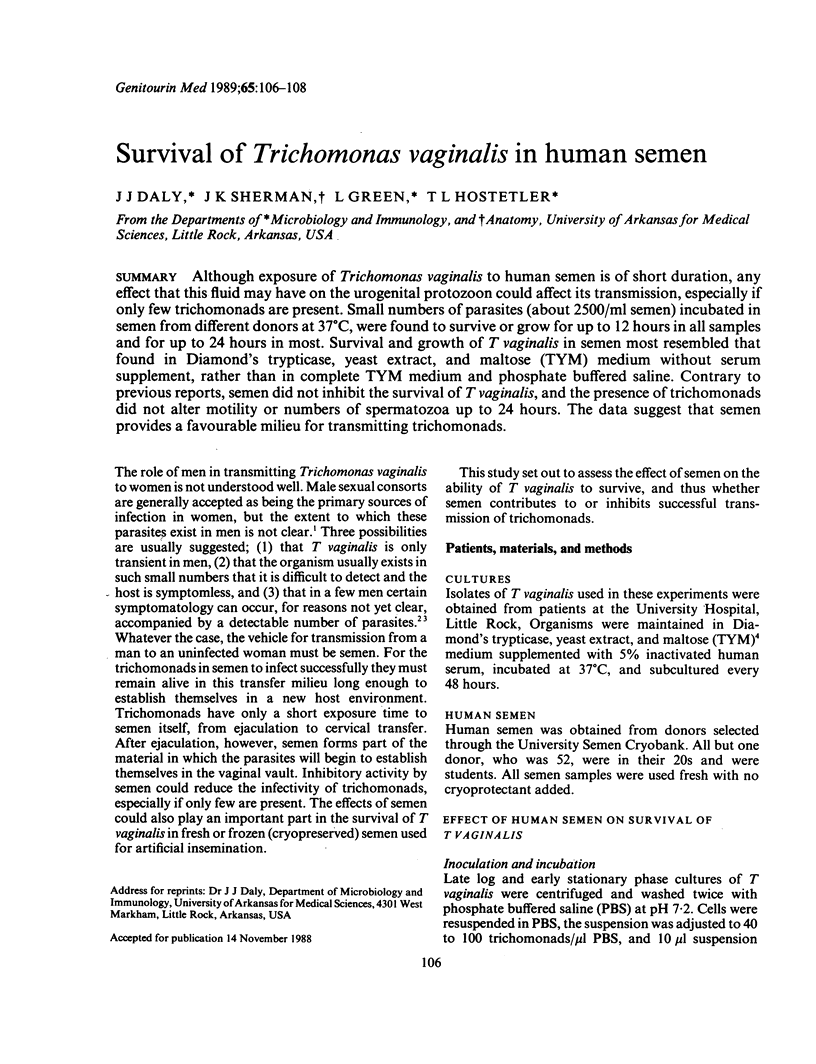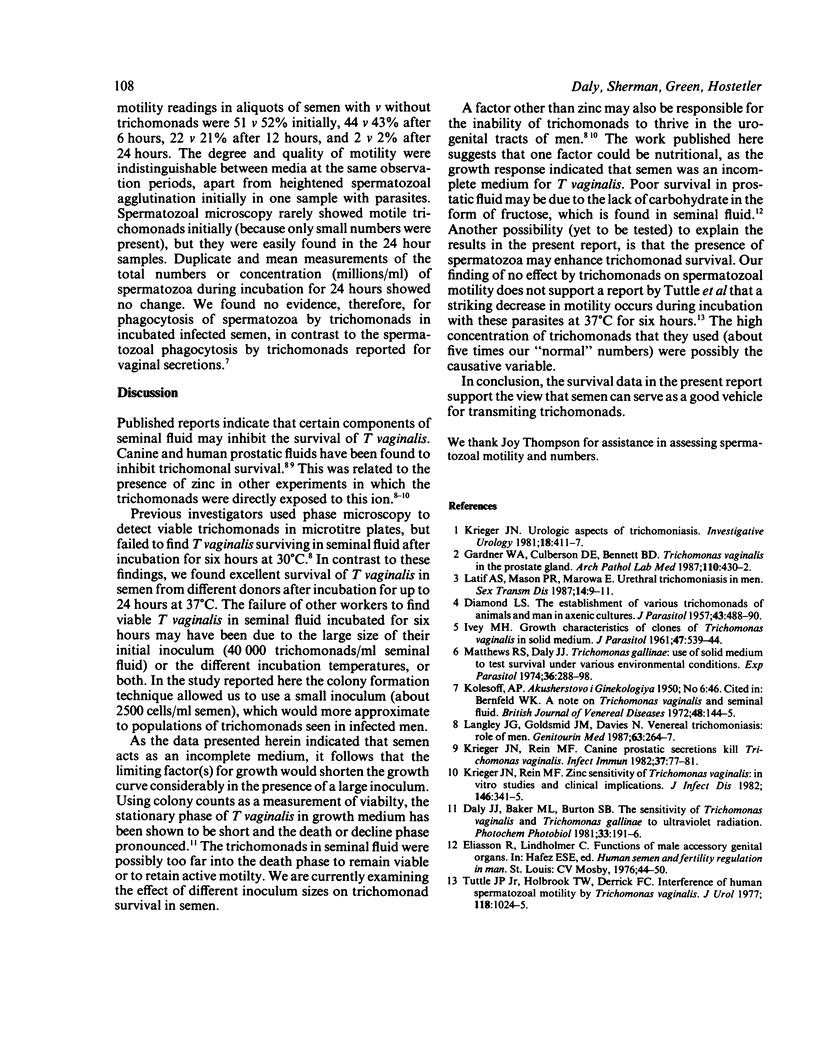Abstract
Although exposure of Trichomonas vaginalis to human semen is of short duration, any effect that this fluid may have on the urogenital protozoon could affect its transmission, especially if only few trichomonads are present. Small numbers of parasites (about 2500/ml semen) incubated in semen from different donors at 37 degrees C, were found to survive or grow for up to 12 hours in all samples and for up to 24 hours in most. Survival and growth of T vaginalis in semen most resembled that found in Diamond's trypticase, yeast extract, and maltose (TYM) medium without serum supplement, rather than in complete TYM medium and phosphate buffered saline. Contrary to previous reports, semen did not inhibit the survival of T vaginalis, and the presence of trichomonads did not alter motility or numbers of spermatozoa up to 24 hours. The data suggest that semen provides a favourable milieu for transmitting trichomonads.
Full text
PDF


Selected References
These references are in PubMed. This may not be the complete list of references from this article.
- Bernfeld W. K. A note on Trichomonas vaginalis and seminal fluid. Br J Vener Dis. 1972 Apr;48(2):144–145. doi: 10.1136/sti.48.2.144. [DOI] [PMC free article] [PubMed] [Google Scholar]
- DIAMOND L. S. The establishment of various trichomonads of animals and man in axenic cultures. J Parasitol. 1957 Aug;43(4):488–490. [PubMed] [Google Scholar]
- Daly J. J., Baker M. L., Burton S. B. The sensitivity of Trichomonas vaginalis and Trichomonas gallinae to ultraviolet radiation. Photochem Photobiol. 1981 Feb;33(2):191–195. doi: 10.1111/j.1751-1097.1981.tb05323.x. [DOI] [PubMed] [Google Scholar]
- IVEY M. H. Growth characteristics of clones of Trichomonas vaginalis in solid medium. J Parasitol. 1961 Aug;47:539–544. [PubMed] [Google Scholar]
- Krieger J. N., Rein M. F. Canine prostatic secretions kill Trichomonas vaginalis. Infect Immun. 1982 Jul;37(1):77–81. doi: 10.1128/iai.37.1.77-81.1982. [DOI] [PMC free article] [PubMed] [Google Scholar]
- Krieger J. N., Rein M. F. Zinc sensitivity of Trichomonas vaginalis: in vitro studies and clinical implications. J Infect Dis. 1982 Sep;146(3):341–345. doi: 10.1093/infdis/146.3.341. [DOI] [PubMed] [Google Scholar]
- Langley J. G., Goldsmid J. M., Davies N. Venereal trichomoniasis: role of men. Genitourin Med. 1987 Aug;63(4):264–267. doi: 10.1136/sti.63.4.264. [DOI] [PMC free article] [PubMed] [Google Scholar]
- Latif A. S., Mason P. R., Marowa E. Urethral trichomoniasis in men. Sex Transm Dis. 1987 Jan-Mar;14(1):9–11. doi: 10.1097/00007435-198701000-00002. [DOI] [PubMed] [Google Scholar]
- Matthews R. S., Daly J. J. Trichomonas gallinae: use of solid medium to test survival under various environmental conditions. Exp Parasitol. 1974 Oct;36(2):288–298. doi: 10.1016/0014-4894(74)90068-x. [DOI] [PubMed] [Google Scholar]
- Tuttle J. P., Jr, Holbrook T. W., Derrick F. C. Interference of human spermatozoal motility by trichomonas vaginalis. J Urol. 1977 Dec;118(6):1024–1025. doi: 10.1016/s0022-5347(17)58285-3. [DOI] [PubMed] [Google Scholar]


